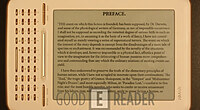
The Tata Nano equivalent of a tablet that surprised everyone with its super cheap price tag of just $35 is now finally here. Named Aakash Low Cost Access Device (LCAD), or just Aakash (and not Sakshat as was previously known), the tablet finally got to see the light of the day after a few controversies earlier in its life cycle had led many to doubt if the tablet will ever become a reality. However, all that has been put to rest with the tablet finally being launched. Let’s put our heads down to what exactly does the entire package has to offer.
To begin with, the Aakash comes with a 7 inch resistive touchscreen display having a resolution of 800 × 480 pixels. The Aakash will have a 366 MHz Connexant processor with a graphics accelerator making up the core of the tablet. A 256 MB RAM works in conjunction with the CPU while the Aakash also boasts of a 2 GB Flash memory. Running the entire tablet operation will be Android 2.2 Froyo, though there is also a micro SD card slot to ensure there is enough storage always available. What is really nice with the Aakash is that it has two USB 2.0 ports along with a 3.5 mm jack.
However, the Aakash connects to the internet via a Wi-Fi connection. A few standard features, such as integrated camera and GPRS, have been done away with to stick to the $35 price point. However, while still at the now famous price of the tablet, the Aakash has been made even more sweet for its intended client, students, for whom the tablet has been priced at $24 which translates to just Rs. 1200. There will also be a slightly more spruced up version of the tablet that would come at a premium, $60 or Rs. 2999. Named Datawind Ubislate, the tablet will almost be identical with the Aakash except that the Ubislate will have just a single USB slot while also offering 2G functionality as well.
The tablet is being manufactured by the Canada based company Datawind at a plant in Hyderabad with the initial lot comprising of a total of 100,000 units of the tablet which government agencies would be buying for $45 apiece while making available to students at a lower rate. It is the post secondary students that would be the beneficiary of the project as of now, with retail sales slated to begin in November.
As for the tablet’s looks, its much better looking than the one that was doing the rounds initially which many had claimed was actually a cheap tablet model sourced from China. Government agencies got down to work since then and had roped in the services of IIT Rajasthan and NME-ICT who went on to develop a truly indigenous device that’s a lot different than the initial models that the Union HRD minister had held aloft earlier in the year.
What remains to be seen next is whether the tablet does deliver where it matters the most or is just about the low initial costs. What other software packages or apps the tablet offers is another area that we would be keen to explore. Like with the tablet being touted as a device made for students, it would be interesting to see if the LCAD will also be able to deliver as a viable e-book reader as well. However,
Keep watching as we uncover all of these in the coming days. Like both the hardware and the software side of the LCAD and the Datawind Ubisoft.
With a keen interest in tech, I make it a point to keep myself updated on the latest developments in technology and gadgets. That includes smartphones or tablet devices but stretches to even AI and self-driven automobiles, the latter being my latest fad. Besides writing, I like watching videos, reading, listening to music, or experimenting with different recipes. The motion picture is another aspect that interests me a lot, and I'll likely make a film sometime in the future.
